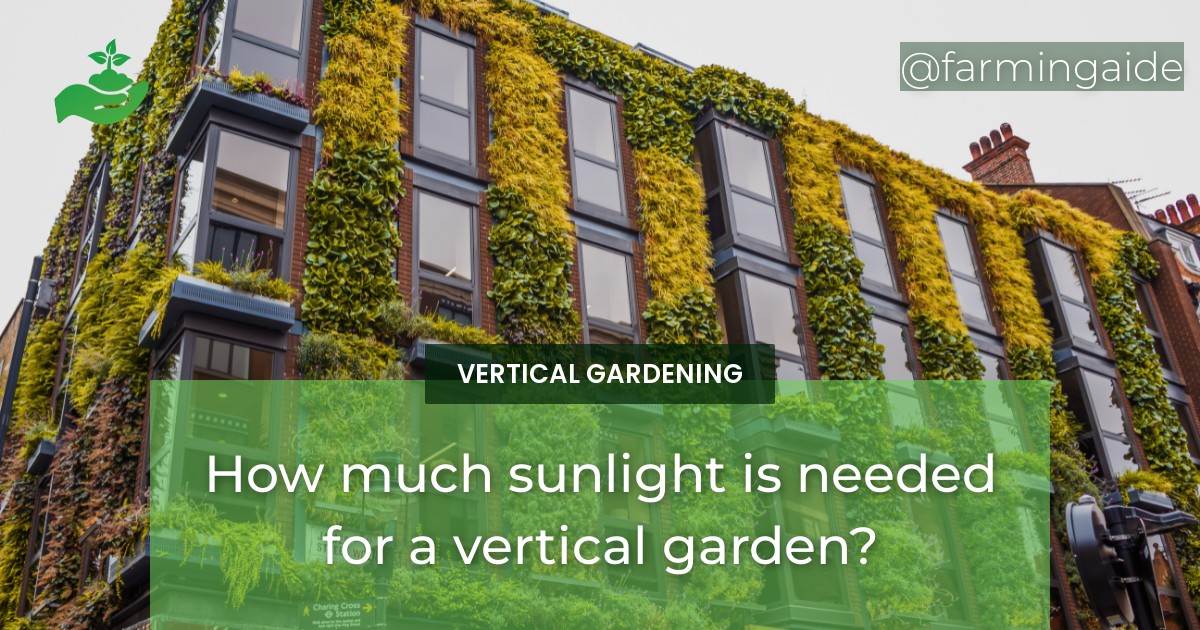Vertical gardening is a great way to grow plants in limited spaces, and it’s becoming more popular among urban gardeners. One of the main factors that can impact the success of a vertical garden is sunlight. So, how much sunlight is needed for a vertical garden?
Sunlight Requirements for Different Plants
Understanding the types of plants that grow in vertical gardens is the first step in determining their sunlight needs. Some plants require full sun, while others can thrive in low-light conditions. Here are some points to keep in mind:
Understanding the Types of Plants That Grow in Vertical Gardens
There are several types of plants that can grow in vertical gardens, including:
- Vines and climbing plants
- Herbs and small vegetables
- Succulents and cacti
- Tropical plants and ferns
- Flowers and ornamental plants
Identifying the Sunlight Needs of Common Vertical Garden Plants
Here are some common vertical garden plants and their sunlight needs:
- Tomatoes, peppers, and cucumbers: 6-8 hours of full sun
- Basil, parsley, and cilantro: 4-6 hours of full sun
- Succulents and cacti: 2-4 hours of direct sunlight or bright, indirect light
- Ferns and tropical plants: 4-6 hours of bright, indirect light
- Nasturtiums, petunias, and marigolds: 4-6 hours of full sun
Plants That Can Grow in Low Light Conditions
Some plants can grow in low-light conditions and are suitable for indoor vertical gardens. These include:
- Snake plant (Sansevieria)
- Spider plant (Chlorophytum comosum)
- Pothos (Epipremnum aureum)
- Peace lily (Spathiphyllum)
- Philodendron
Assessing the Available Sunlight in Your Space
After understanding the sunlight needs of your plants, the next step is to assess the amount of sunlight in your vertical garden space. Here are some tips:
Measuring the Amount of Sunlight in Your Vertical Garden Space
You can use a sunlight meter or a smartphone app to measure the amount of sunlight in your space. Alternatively, you can observe your space at different times of the day to determine the areas that receive the most sunlight.
Factors That Can Affect the Amount of Sunlight in Your Space
Several factors can affect the amount of sunlight in your space:
- Direction and angle of the sun
- Seasonal changes
- Shadows from buildings, trees, and other structures
- Reflections from nearby surfaces
Choosing the Right Time of Day to Assess Sunlight in Your Space
Assess your space at different times of the day to determine the best and worst spots for sunlight. You may also want to check the sunlight levels during different seasons to ensure you are providing your plants with the right amount of sunlight.
ALSO READ
Shading Options for Vertical Gardens
Shading is an important aspect of vertical gardening that can help protect your plants from excessive sunlight or heat. Here are some options:
Understanding the Importance of Shading in Vertical Gardens
Shading can help protect your plants from:
- Excessive heat
- Sunburn
- Drying out
- Stress and damage
Types of Shading Material for Vertical Gardens
Here are some materials you can use for shading your vertical garden:
- Shade cloth
- Netting
- Umbrellas or parasols
- Plants with large leaves
- Structures like trellises or pergolas
Balancing Sunlight and Shade in Your Vertical Garden
It’s important to strike a balance between sunlight and shade in your vertical garden. Too much shade can hinder plant growth, while too much sunlight can damage the plants. Experiment with different shading options until you find the right balance.
Maintenance Tips for Sunlight and Vertical Gardens
Here are some tips for maintaining the right sunlight levels in your vertical garden:
Monitoring and Adjusting Sunlight Levels for Your Vertical Garden
Regularly monitor the sunlight levels in your vertical garden and adjust shading as necessary. You can also move your plants around to ensure they are getting the right amount of sunlight.
Troubleshooting Sunlight-Related Problems in Your Vertical Garden
If your plants are showing signs of sun damage or not growing properly, it may be due to sunlight-related issues. Some common problems include:
- Yellowing or brown leaves
- Wilting or drying out
- Stunted growth
- Lack of fruit or flowers
If you notice any of these issues, adjust the amount of sunlight or shading your plants are receiving.
Tips for Maximizing Sunlight and Plant Growth in Your Vertical Garden
Here are some tips for maximizing sunlight and plant growth:
- Choose plants that are suited to your space and sunlight levels
- Rotate your plants for even sunlight exposure
- Water your plants regularly to prevent drying out
- Fertilize your plants as needed to promote healthy growth
- Prune your plants to promote airflow and prevent overcrowding
ALSO READ
Conclusion
Sunlight is an essential component of vertical gardening, and understanding the sunlight needs of your plants can help ensure their success. Assessing the available sunlight in your space, providing shading as needed, and monitoring and adjusting sunlight levels are all important steps in maintaining a healthy vertical garden.
RELATED ARTICLES:


